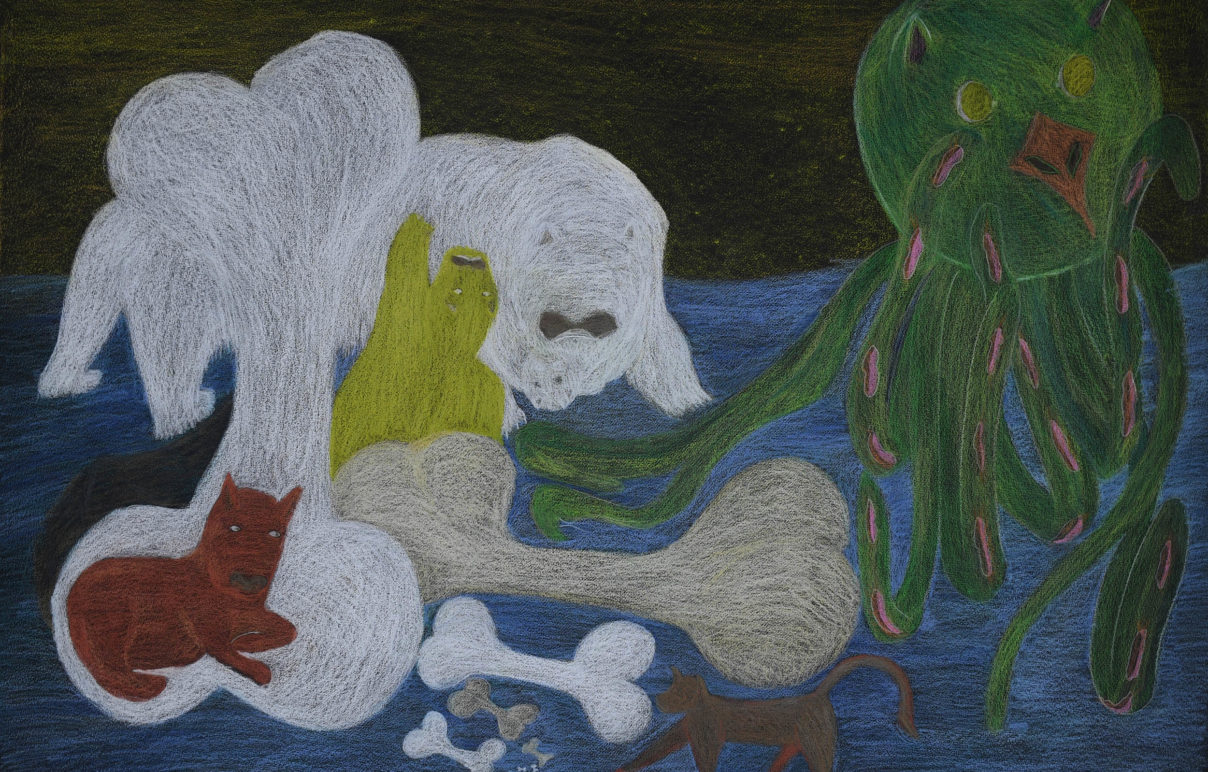
Shvinai Ashoona’s “Untitled,” 2019. Colored pencil. A piece from “Shuvinai Ashoona: Drawings” that was presented by ICA Miami. This was Ashoona’s first U.S. museum presentation.
Image courtesy of: ICA Miami
In an attempt to ensure that traditional and indigenous art styles are never forgotten, there has been an increased urgency to showcase styles such as Inuit Art. Today, there are more than 180,000 Inuit that (courtesy of The Wall Street Journal), “live in a band of northern territory stretching from Eastern Siberia through Alaska, Canada, and Greenland.” Inuit artists are the gatekeepers for the Indigenous people’s culture; their drawings and sculptures show how their ancestors lived. In essence, these special artists are keeping history alive.
The art is special as it is a reminder of the traditional way of life… how previous generations hunted and made protective clothing and shelter. This visual history has enabled outsiders a window into the lives of those living in perhaps the earth’s most unforgiving climate.
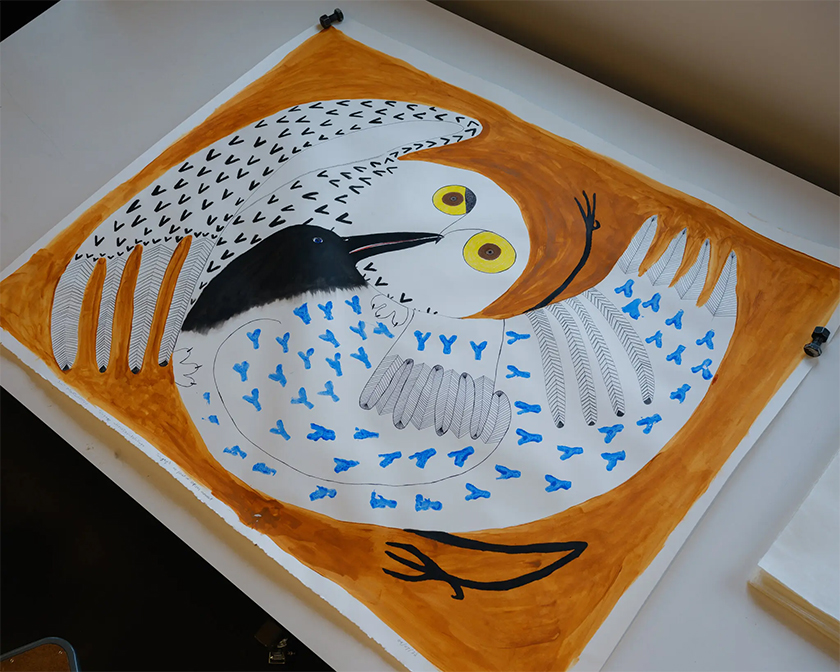
Image courtesy of: The New York Times, photographed by: Brendan George Ko.
One such artist is work typically features arctic birds, animals, and sea mammals; specifically, majestic owls, elegant seals, and forceful polar bears. However different than the normal manifestation of animals, Teevee’s creatures possess a special character. Courtesy of Government of Canada (Discover Inuit Art), “When you look closely at the birds and animals in Inuit art, you will see that each one often has its own special character. The individual appearance of the creatures in Inuit art grows out of the respect that Inuit gave to all living things.”
The myths and legends told from generation to generation are the inspiration behind today’s Inuit art outputs. In particular, the notion that humans and other living beings are interconnected in an all-mighty universe serves as a starting point at this geographically isolated location. Art serves as an unexpected opportunity for those who are seraching for “something different and new.” In a location that has a long history of poverty, alcoholism, and suicide… art is, for some, a beacon of hope.
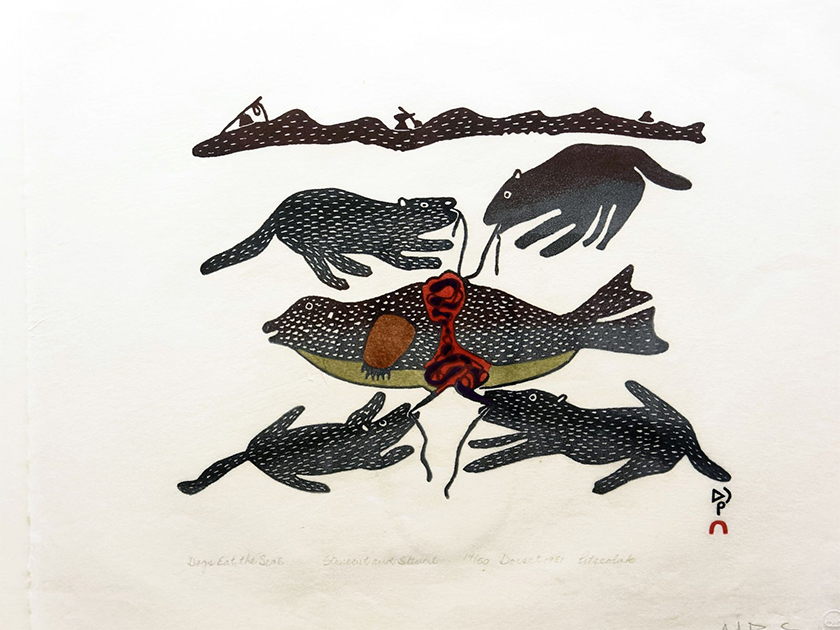
A drawing by Pitseolak Ashoona, Shuvinai’s grandmother. Typically, Ashoona’s works are based upon memories of her childhood filled with family activities and nomadic hunting and fishing.
Image courtesy of: The Tribe CA Trib
One artist that has gotten a lot of publicity recently, in addition to winning a special motion at the Venice Biennale is Shuvinai Ashoona. Ashoona is part of a small group of third- and fourth-generation artists “using the limits on what Inuit art was assumed to look like.” Nancy Campbell, a Toronto-based curator said about Ashoona’s art, “And it is capturing the attention of the global art world at a time when locale and nationality have opened viewers up to seeing art practices that exist outside the art world norm.”
Ashoona has artistry in her genes; her grandmother was a central figure within the region’s art world and her younger sister is a well-known sculptor who lives in Winnipeg. Interestingly, it was the grandmother’s chance meeting with James Houston, an artist and government field worker, that helped introduce Inuit art to international audiences.
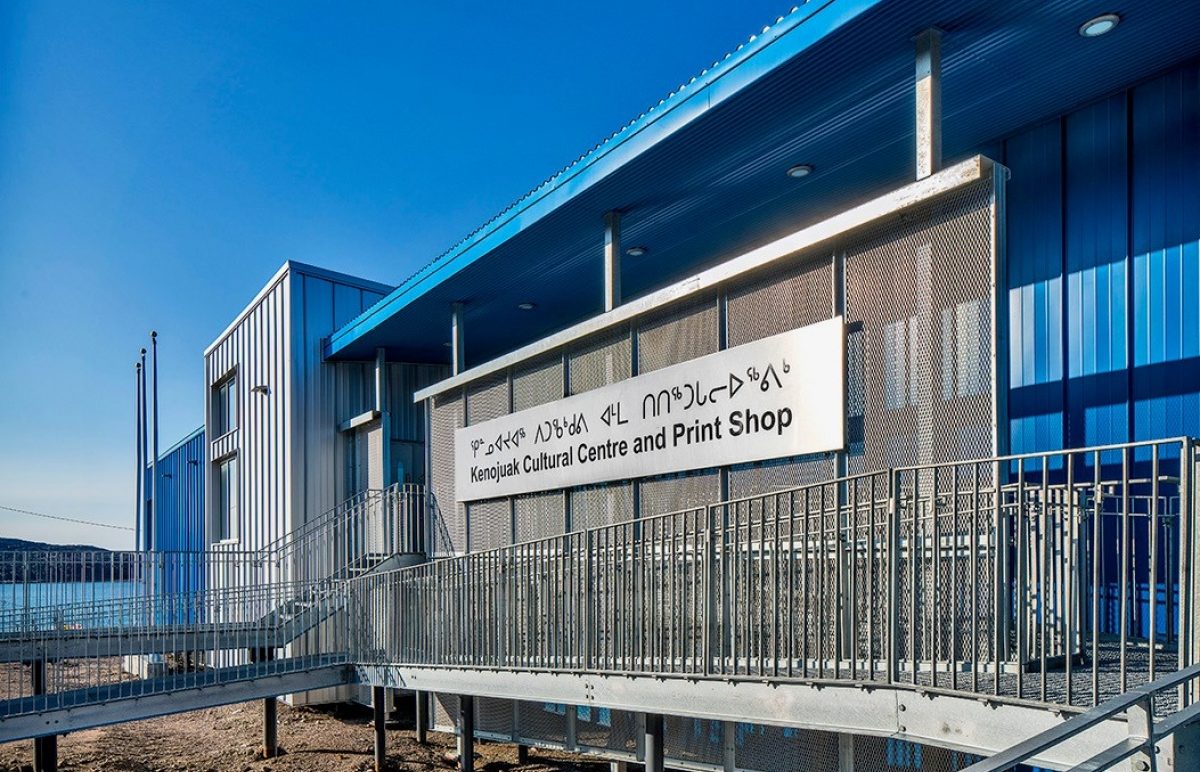
Kenojuak Cultural Center & Print Shop opened in 2018. The community owns the cooperative and is behind its sixty years of success; it is governed by an all-Inuit Board of Directors. Almost all of the adults in Kinngait are shareholders, meaning that at the end of each calendar year, profits from the art sales are distributed back into the community via annual dividends.
Image courtesy of: AGO
Most of the Inuit art is produced at Kinngait Studios, a cooperative on the island which sits at the tip of Baffin Island. No roads link the township to other towns and a common mode of transportation is a prop plane. Initially, the studios were known as the “512…” because of the square footage that is allotted for governmental housing. Now, the studios are housed inside the Kenojuak Cultural Center & Print Shop. The facility, which opened in 2018, cost $10.8 million and is most probably “the only studio in the world where artists’ wet boots share space with artfully arranged walrus skulls and whale baleen.”
Since the studios are owned by the West Bafflin Eskimo Co-operative, everything produced inside is community-owned. Artists are paid on a per-piece basis that ranges from $300 to $1,000 for a small sculpture and up to $3,500 for large pieces produced by the more familiar artists such as Ashoona. Once completed and “paid out,” the art is shipped to Dorset Fine Arts… the studio’s wholesale showroom in Toronto. There, gallerists can view the latest and greatest from Kinngait’s 1,600-strong print collection.
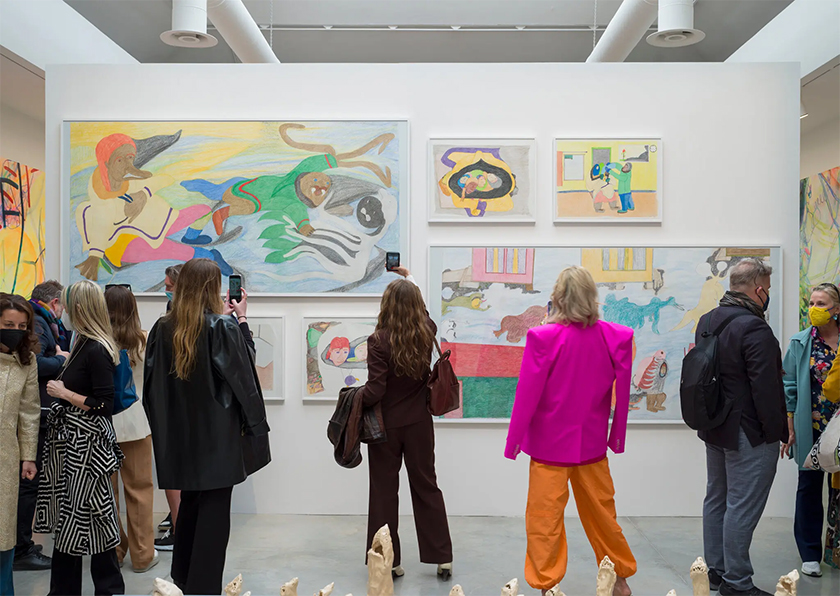
Ashoona’s installation at this year’s Venice Biennale. The fair curator, Cecilia Alemani, said (courtesy of The New York Times), “What I appreciate is her idea of celebrating a communal life between humans and animals in a very spontaneous and joyful way.”
Image courtesy of: The New York Times, photographed by: Cheryl Rondeau
Inside the arts center, there are close to 100 artist-members working in various mediums. In addition, there are printmakers who work alongside the artists to produce print editions. It was Houston who first realized that the limited-edition prints were a way to “translate Inuit motifs into marketable art.”
Typically, artists spend long days working alongside the printmakers in the studios. Stone sculptors typically work from home or outdoors as their process creates quite a mess. However everyone enjoys being at the studio as they understand that working in a common space allows the opportunity for peer-to-peer exchanges and collaborations.
Opening in 2018, the center’s design is relatively basic. Many of the structural details include wood and there are lots and lots of windows which allow for sweeping panoramic views of the stunning landscape from nearly every part of the building. The artsy hub in Arctic Canada is as state-of-the-art as possible and the improved equipment, technological improvements, and extra amenities make it a place that begets limitless creativity.